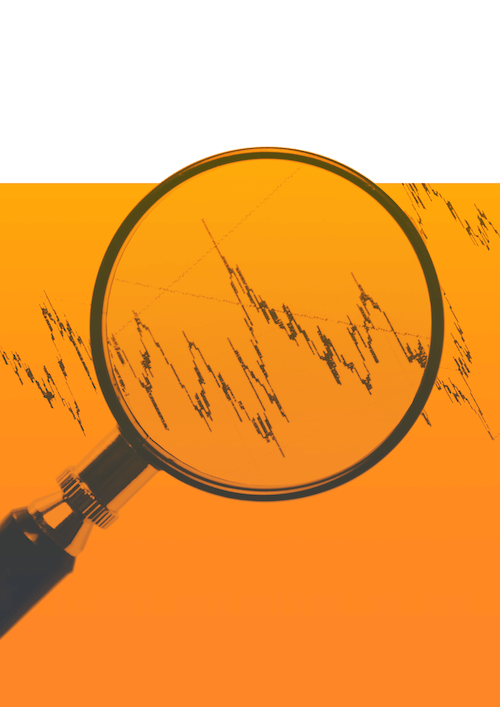WHAT IS NICKEL AND WHAT IS IT USED FOR?
Trade Smarter - Sign up for the DailyFX Newsletter
Receive timely and compelling market commentary from the DailyFX team
Nickel or Ni (periodic table atomic symbol) is a versatile silver/white metal that is often used as an input in the manufacture of countless secondary products. Listed as number 28 on the periodic table, nickel has exceptional properties including its resistance to corrosion, ferromagnetic (magnetic), ductileness, recyclability, serving as a good conductor of electricity as well as high boiling (2,913 °C) and melting (1,455 °C) points. Some notable uses include the making of coins, steel, reinforcing other materials in the aerospace industry, wiring, alloys and renewable energy.
Nickel is primarily found and extracted in Indonesia, South Africa, Australia, Russia and Canada respectively. These countries combined account for roughly 50% of the worlds nickel supply and should be given the appropriate attention with regard to trading as supply factors as with most commodities, can impact the price of nickel.
NICKEL TRADING HOURS AND EXPOSURE
LME select: 01.00 - 19.00 (Trading for LME precious continues until 20.00) (UK time)
Ring trading: 11.40 - 17.00 (UK time)
Inter-office telephone trading: 24 hours
Trading nickel is not limited to physical purchases (bullion) but via multiple avenues where traders can get exposure to price movements. Futures trading on exchanges such as the London Metals Exchange (LME) are commonplace amongst institutions but for the retail trader, Contracts For Difference (CFDs) are a popular choice. CFDs are accessible globally through many brokers offering nickel trading (spot and futures) but it is recommended to understand contract specifications, leverage and broker safety before committing on this route. Covering nickel through the stock market remains as the most widespread method for retail investors with shares such as Vale S.A., Nornickel, Glencore, BHP, Anglo American and South32 topping the list.



WHAT AFFECTS NICKEL PRICES?
SUPPLY AND DEMAND
As briefly mentioned above, supply and demand constitute a large influence over nickel prices. Economic theory suggests limiting supply drives prices higher and vice versa while the same logic applies to demand (i.e. an increase in demand should lead to higher nickel prices). Global nickel stocks can be monitored on the LME website while Chinese stockpiles also play an important role in nickel price action.
GOVERNMENTS
Governments involved with nickel (import or export) can sway prices by way of government intervention. An example of this was the banning of nickel exports by Indonesia.
GEOPOLITICS
Geopolitical tensions particularly regarding major producers of nickel could significantly move prices. Recently, the Russian invasion of Ukraine disrupted supply chains resulting in a marked increase in the price of Nickel.
CHINA
China is the world’s major consumer of nickel in its various forms, and a slowdown or uptick in the Chinese economy traditionally reflect a positive correlation with the price of nickel. China is arguably the most important demand factor for nickel prices therefore, placing emphasis on Chinese economic and political data is crucial to successful nickel trading.
In actuality, most of the above factors are intertwined and will act in accordance to traditional supply/demand levers making it one of the more important aspects of nickel trading.
Foundational Trading Knowledge
Commodities Trading
Recommended by Warren Venketas
WHY TRADE NICKEL?
Nickel’s place in the world commodity marketspace is gaining traction in terms of its usability in growing industries. With nickel being prices in U.S. dollars, the commodity also serves as a hedging tool against a weaker greenback coupled with elevated inflation. In addition, when global markets are on the up (bull market), trading nickel can be a great way to capitalize on increased demand as nickel prices are likely to move higher.
Finally, diversifying ones investment portfolio is often encouraged by market experts and nickel can certainly have a place amongst more common investment types such as stocks or bonds.
TRADING NICKEL: STRATEGIES
Nickel prices being so dependent on fundamental drivers, technical strategies are often seen as secondary support for trading decisions which is why it may be wise to employ a more blended approach using both techniques. The below examples look at each strategy in isolation to better emphasize their respective pros and cons.
TECHNICAL TRADING
From a technical trading standpoint, using traditional indicators and price action techniques can be successfully implemented when trading nickel. Because there are an infinite amount of combinations of technical methods, I have selected a simple yet effective method to illustrate the adaptability of technical trading in markets such as nickel which is not traditionally linked with technical analysis.
DAILY NICKEL CHART
Chart prepared by Warren Venketas, IG
The chart above includes a 200-day Simple Moving Average (SMA) in grey along with the Relative Strength Index (RSI). Using the SMA as a reference for directional bias (above SMA = bullish; below SMA = bearish), we can utilize the SMA in this case as a support zone for possible long positioning highlighted by the grey boxes. A move below the SMA will ultimately invalidate the move and sound risk management will be required to avoid any adverse price action. Should the market move in the desired route (upwards in this case), the RSI can then be used to close by correlating price with an overbought indication (blue). This simple strategy is just one such technical avenue that may be practiced in the nickel market.
FUNDAMENTAL TRADING AND THE NICKEL SHORT SQUEEZE OF 2022
If we look at the nickel chart since 2015, nickel has been somewhat rangebound between the $10000 – $20000 levels. In early 2022, when Russia invaded Ukraine the price of nickel started to push higher as a disruption in Russian nickel exports impacted supply-side factors. With a major producer being largely taken off the global register, supply concerns piled on and continued to drive up the price of nickel. In conjunction with the invasion, a massive short position was placed by a Chinese trader (Xiang Guangda, Tsingshan Holding Group Co). It is still uncertain as to whether this positioning was purely for hedging purposes (offsetting any losses from falling nickel prices from the physical commodity) or simply speculative reasons but the result was catastrophic for nickel markets. What followed was a short squeeze causing nickel prices to surpass $100000 per ton (see graphic below) triggering the LME to halt nickel trading!
250% NICKEL PRICE APPRECIATION IN JUST OVER 24HRS
Source: Bloomberg
DAILY NICKEL CHART
Chart prepared by Warren Venketas, IG
Monitoring fundamental drivers, be it supply disruptions from the world’s largest producers or staying in touch with demand-side constituents like China can go a long way in making rational decisions on the future of nickel prices. Fundamentals can be used in conjunction with technical analysis but generally fundamental drivers point to longer-term outlooks and do not lend themselves to short-term strategies.
Introduction to Technical Analysis
Trade the News
Recommended by Warren Venketas
RESOURCES TO HELP YOU TRADE NICKEL
Commodity markets often have mutual economic stimuli so keeping up to date with the latest news outside of nickel can aid nickel traders in creating an overall global picture. Some markets to consider include copper and crude oil who often act as a barometer for global growth. For those who are interested in commodity trading education, the DailyFX commodities segment contains everything you need to know about the foundation and basics of commodities markets.



